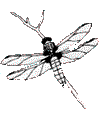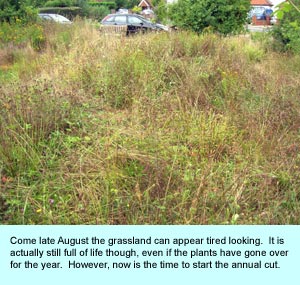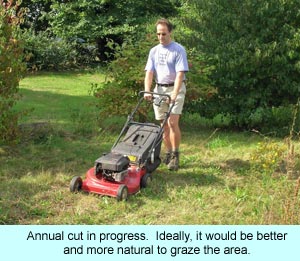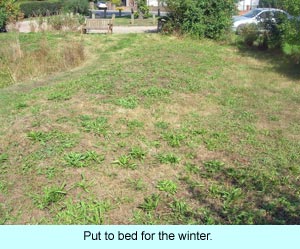
Mayford Heritage Pond

Managing the site - The How and The Why
The Pond
Management of Mayford Pond takes place in autumn and winter. This is done to cause as little disturbance as possible. Excessive and dead vegetation is cleared and removed from the pond and placed on the bank before composting to allow any creatures on the plants to return to the water.
This is done so that there is not too much decomposing vegetation in the pond, which would burn up more oxygen than the living plants can provide both for this process to happen and, for the creatures in the pond to breathe.
You may see an oily film on the water's surface from time to time. This is natural, harmless and is caused by disturbance of the rotting matter on the bottom of the pond.
It is essential not to top up low water levels with mains water at any time of the year. High levels of certain chemicals present in mains water, such as Aluminium, are toxic to many small invertebrates and can wipe out whole populations, especially those that absorb oxygen through their skin or delicate gill systems.
It is natural for the water level to fluctuate and some species of insects, dragonflies for example, require this to happen to be able to successfully reproduce.
The Grassland

The surrounding grassland area is only mown once a year in late summer/early autumn, following standard conservation guidelines for this habitat. There are two reasons for doing this:
Firstly, it allows all the plants, which includes the grasses, to flower and set seed. Frequent visitors will notice that there is a procession of flowering periods of different species through the year from April to late August and not one single period in the summer. On average, grasses make up 80% of all the flowering plants present in such an area. The other 20% being comprised of the broad-leaved plants

Secondly, it allows all the animals that live in the grassland to breed and shelter. Again, because of the rich abundance of species present this process takes place over several months. Examples of this include the grasshoppers and bush-crickets that are present right through into late August. The anthills here are an important feature of grassland areas, as the ants' activity aerates the soil, which benefits the plants and they can maintain plant and insect species to a certain degree. Their presence is also beneficial to some other species of animals for food and reproduction.

When the area is mown, the cuttings are collected and removed to reduce the amount of nutrients rotting back into the soil. This is vital for the health of the herbaceous wildflowers and grasses that require relatively nutrient poor soils. If this were not done the area would quickly be taken over by nettles and brambles. The area near the back by the garage has never been cut, though this is deliberately left to act as winter refuge for wildlife such as amphibians and small mammals, and because it was planted with wild roses. The whole area would look like this if it was not managed in the way that it is.
Monitoring
This is an ongoing study of the habitats and wildlife to ascertain their condition and to see what species have colonized the area and how their populations are faring. The results of surveys are used to determine what, if any, additional management is required, and the results of some of the monitoring are sent to the Records Officer of Surrey Wildlife Trust. Studies show that several rarer species have colonized both the pond and the surrounding grassland areas.
Since 1997, the pond and surrounding grassland have become a haven for wildlife. Aside from the species planted in 1997, many grasses and other flowers have since colonized these areas. These species have in turn become food and home to a plethora of creatures, from water fleas to grass snakes, and ants to rabbits.
The ongoing wildlife monitoring and habitat management is carried out by volunteer and co-founder of the Mayford Heritage Pond Group, Adam Cheeseman, who is a professional ecologist and countryside ranger.